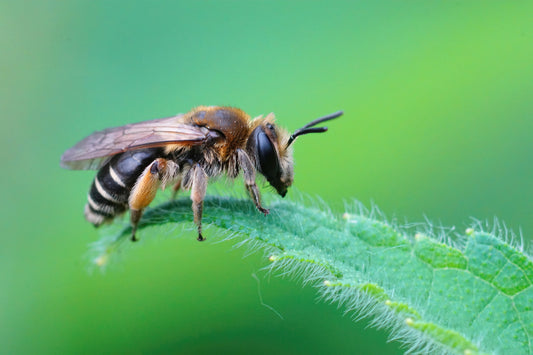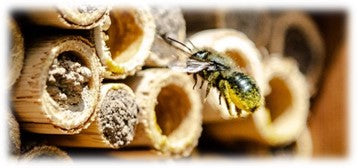
Have you ever watched your beautiful spring pollinator garden suddenly turn into a barren wasteland by June? I'll never forget the sinking feeling I had three years ago when my vibrant April garden became a disappointing gap-filled disappointment just as summer pollinators were emerging in full force.
That's when I learned the hard truth: most gardeners plan for spring OR summer blooms, but completely miss the critical transition period that can make or break your pollinator support system.
The June Gap That's Starving Your Pollinators
Picture this: your spring bulbs have finished their show, your early perennials are spent, but your summer stars haven't started blooming yet. Meanwhile, hungry bees and butterflies are desperately searching for nectar sources during one of their most active periods.
"Planning a 3-week overlap between bloom cycles" is essential, according to pollinator garden experts. This was my lightbulb moment – I wasn't thinking like a pollinator restaurant manager, ensuring consistent food availability throughout the season.
The statistics are eye-opening: a single bee colony needs access to diverse blooms from 2-3 different plant families throughout the growing season to maintain optimal health

When we create bloom gaps, we're literally forcing our pollinator friends to travel farther for food or abandon our gardens entirely.
Three Critical Mistakes That Kill Summer Transitions
1. The "Set It and Forget It" Spring Planning
I used to plan my spring garden in March and call it done. Big mistake! "Create monthly bloom timeline chart" and "map frost dates for your region" are year-round planning activities, not one-time events.
What changed everything? I started thinking in bloom waves rather than individual plants. Now I plan specific transition plants that bridge my spring beauties with summer showstoppers.
2. Ignoring Your Microclimate Timing
Here's what nobody tells you: bloom charts from gardening books are guidelines, not gospel. Your specific location, soil conditions, and microclimate can shift bloom times by 2-3 weeks.
The solution? "Document peak pollinator activity periods" in YOUR garden specifically. I keep a simple phone note with actual bloom dates, not predicted ones. This real-world data has revolutionized my transition planning.
3. Focusing Only on Peak Performers
Most gardeners choose plants for their peak bloom display, completely ignoring transition value. But here's the secret: the best transition plants aren't necessarily the showiest ones.
Your 5-Step Summer Transition Success System
After transforming my own garden and helping dozens of fellow pollinator enthusiasts, here's my proven system for seamless spring-to-summer transitions:
Step 1: Map Your Current Reality
Before adding anything new, document exactly when your existing plants bloom and fade. "Document previous years' bloom patterns" and "adjust timing based on microclimate".
I use a simple calendar app with photo reminders – it takes 2 minutes per plant but gives you invaluable baseline data.
Step 2: Identify Your Gap Zones
Most gardens have 2-3 specific gap periods. For me, it's late May and mid-July. For you, it might be early June and August. The key is identifying YOUR specific problem periods rather than assuming generic timing.
Step 3: Choose Strategic Bridge Plants
This is where the magic happens. Select plants specifically for their transition timing, not just their beauty. My go-to bridge plants include:
-
Late Spring to Early Summer: Catmint (Nepeta), which starts blooming in May and continues through September
-
Early to Mid-Summer: Threadleaf Coreopsis, providing consistent blooms when most perennials take a break
- Mid to Late Summer: Sedum varieties that bridge the gap to fall aster.

The secret? "Plan 3-week overlap between bloom cycles" means each bridge plant should start blooming before the previous plant stops.
Step 4: Implement Succession Planting
Here's a technique I borrowed from vegetable gardening: plant the same species at 2-week intervals for extended bloom periods. "Schedule succession planting dates" has tripled my bloom duration for key transition plant.
For example, I plant three waves of zinnias: early May, late May, and mid-June. Result? Continuous blooms from June through frost instead of one intense burst.
Step 5: Create Your Transition Timeline
"Create color-coded bloom calendar" and "plan for seasonal transitions" by developing a visual timeline. I use a simple spreadsheet with color-coded bars showing bloom periods for each plant.
This visual planning tool immediately reveals gaps and overlaps, making it obvious where to add transition plants.
The Advanced Strategies That Set Experts Apart
Layered Bloom Architecture
Think vertically and seasonally. Plant spring bulbs under summer perennials, with late-season annuals filling foreground gaps. This creates multiple bloom layers that naturally transition throughout the season.
 Microzonal Planting
Microzonal Planting
"Create south-facing planting beds" and "position plants based on light needs" to manipulate bloom timing within your garden. Plants in your warmest microzones bloom 1-2 weeks earlier, while cooler spots extend the season.
Strategic Deadheading
Here's a pro tip: Selective deadheading can extend or delay blooms to fill specific gaps. Removing spent flowers from catmint in June triggers a second flush just when you need it most.
The Results That Will Amaze You
When you implement this transition system, gardeners consistently report dramatic improvements:
-
Pollinator activity typically increases by 200-300% during summer months as consistent food sources attract and retain beneficial insects
-
Gardens supporting this approach often host 8-15 different bee species compared to 3-5 in traditional planting.
-
Neighbors frequently notice the difference, asking why butterflies seem to "prefer" certain gardens over others
-
Summer maintenance often decreases because healthier, well-planned plant communities require less intervention and create more resilient ecosystems.

The transformation happens gradually but becomes undeniable by mid-summer when your garden buzzes with activity while others experience the typical July pollinator slump.
Your Transition Action Plan Starts This Weekend
Ready to eliminate the dreaded summer bloom gap? Here's what you can do immediately:
Start documenting your current bloom timeline this weekend. Take photos of what's blooming now and set calendar reminders to check weekly throughout the season.
Order transition plants for fall planting – fall establishment gives you stronger, earlier blooms next year.
What's your biggest bloom gap challenge? Share in the comments below – I read every comment and love helping fellow pollinator gardeners solve their specific timing puzzles!
Ready to take your transition planning to the next level? Read more about The Ultimate Transition Plant Selection Guide: Regional Recommendations That Actually Work to discover specific plant recommendations for your exact climate zone, detailed regional strategies, and proven selection methods that eliminate guesswork from your pollinator garden planning.




